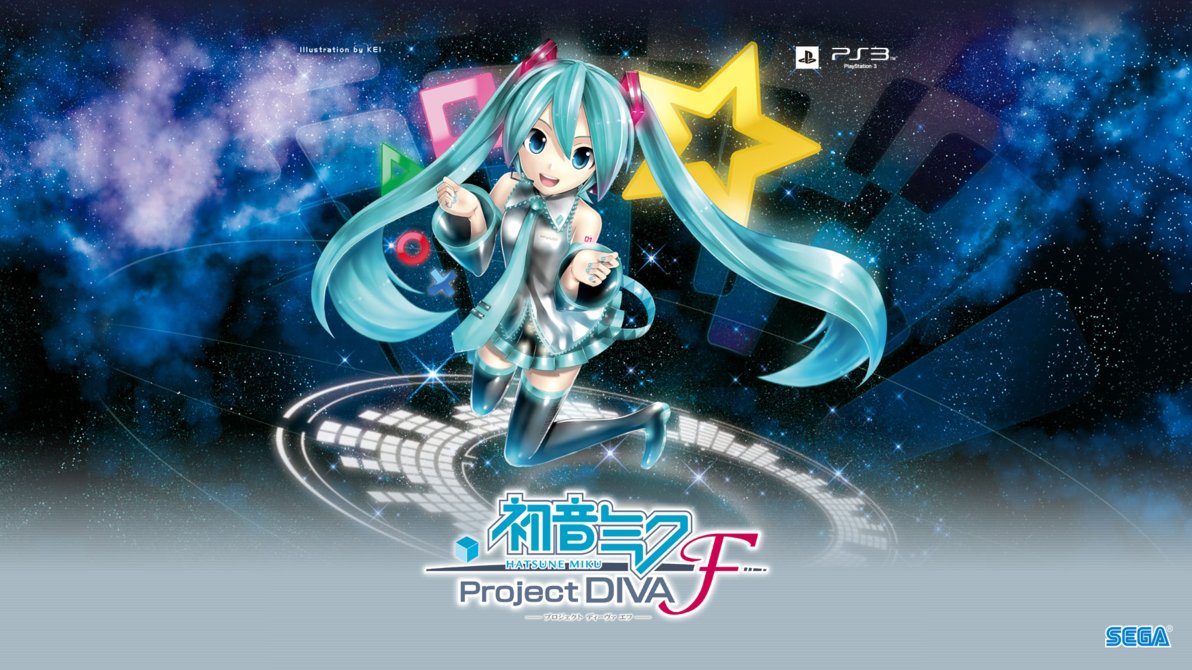
Hatsune Miku: Project Diva F (PlayStation 3)
Back in September 2013, this site was born as a blog. The first ever post was of a review for Project Diva F on PlayStation 3. As a celebration of 5 years of continuous work, that original review has now been revamped (or should I say streamlined, considering the biblical original was almost 3 pages in Word) for our current site. Hopefully you’ll enjoy this blast from the past!
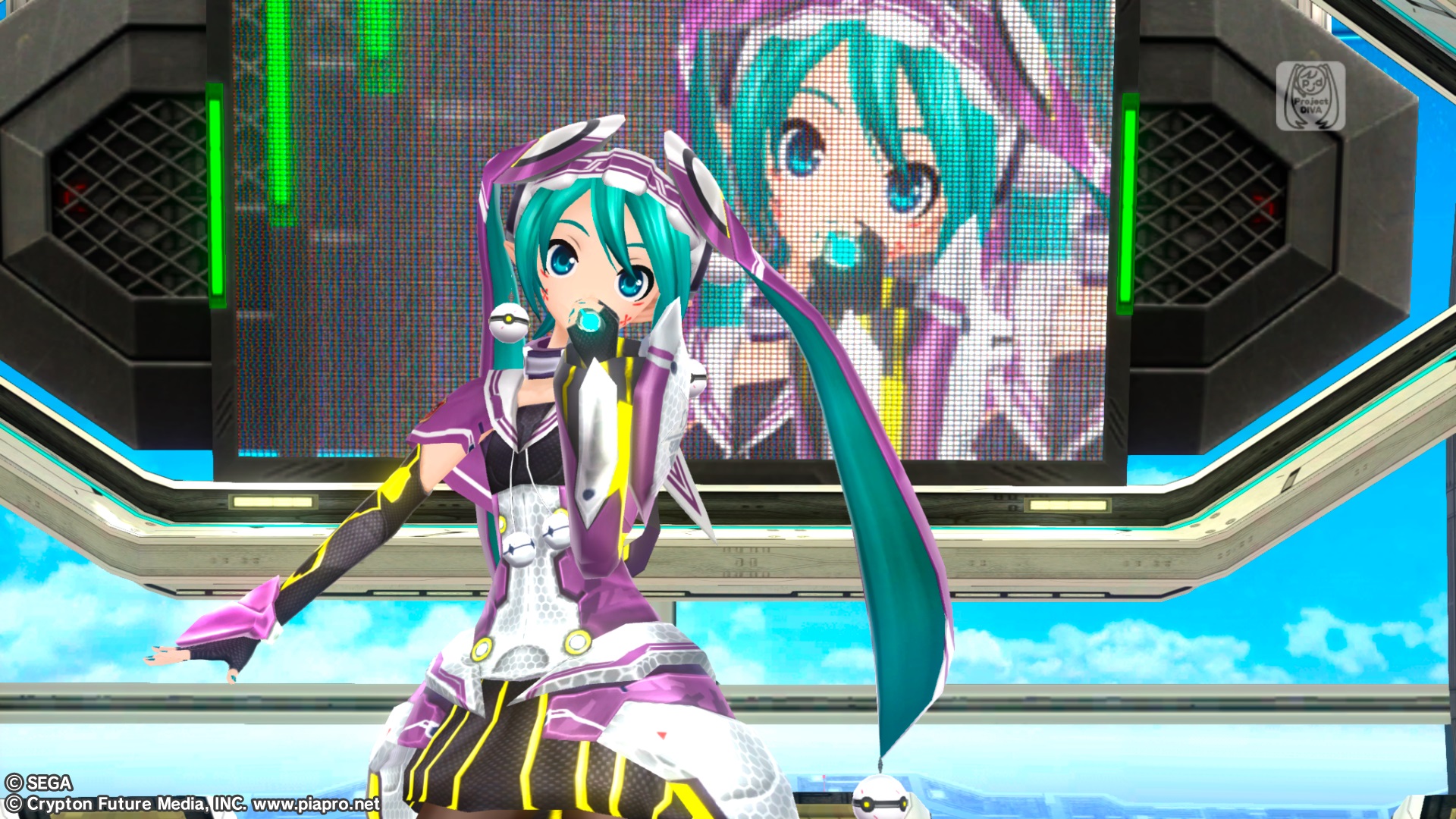
The Game features a total of 44 songs, Including DLC. From what Ive gathered almost all of these are new for the Project Diva series, so anyone coming from the PsP games will be happy to see not much reused content here. Each song has 4 difficulty settings (Easy, Normal, Hard, Extreme) and when a song is completed, points are awarded that can be used to buy content. This content includes costumes (or modules as known in-game) which there are 84 in total when all the Vocaloids are combined (Miku, Luka, Rin, Len, Kaito, and Meiko) plus there’s gifts and content to buy for the Diva room. I’m glad to see the Diva room has been kept in the game and also expanded a little over the previous PsP releases. The Diva room allows you to interact with the Vocaloids and build up ‘affection’ with them, which in turn allows mini games or events to be played out. There are also objects to decorate the room with and the room itself can have its style changed. I must point out tho that everything must first be unlocked by completing songs. Complete a song on Easy – unlock content. Complete same song on Normal – unlocks more content. Indeed, each song will need to be cleared 4 times to unlock ALL content.
Moving on to a surprisingly interesting feature, There is an Edit area of the game that allows you to create your own Videos and also your own song stages using your own Mp3’s. Yes, You can have Miku getting her groove on to Vanilla Ice if you so desire. Your creation can then be shared online via the Network section of the menu! A brilliant inclusion in theory. If you share your creation, only the video and song stage is shared. The Mp3 does not get uploaded too (for obvious reasons like copyright I guess) What happens is that when you load the downloaded edit data you’ll be asked to import an Mp3 from your system. There is also a Studio option that allows for you to upload pictures and then generate one of the vocaloid to position within the picture before saving it. Im not sure how much use this will get outside of Vocaloid fans. Finally there is of course stat-tracking, but this raises another somewhat minor issue. There is no online leaderboards, so if your the type of person who just has to be better than John Smith from Nepal at games, then its omission may leave you disappointed.
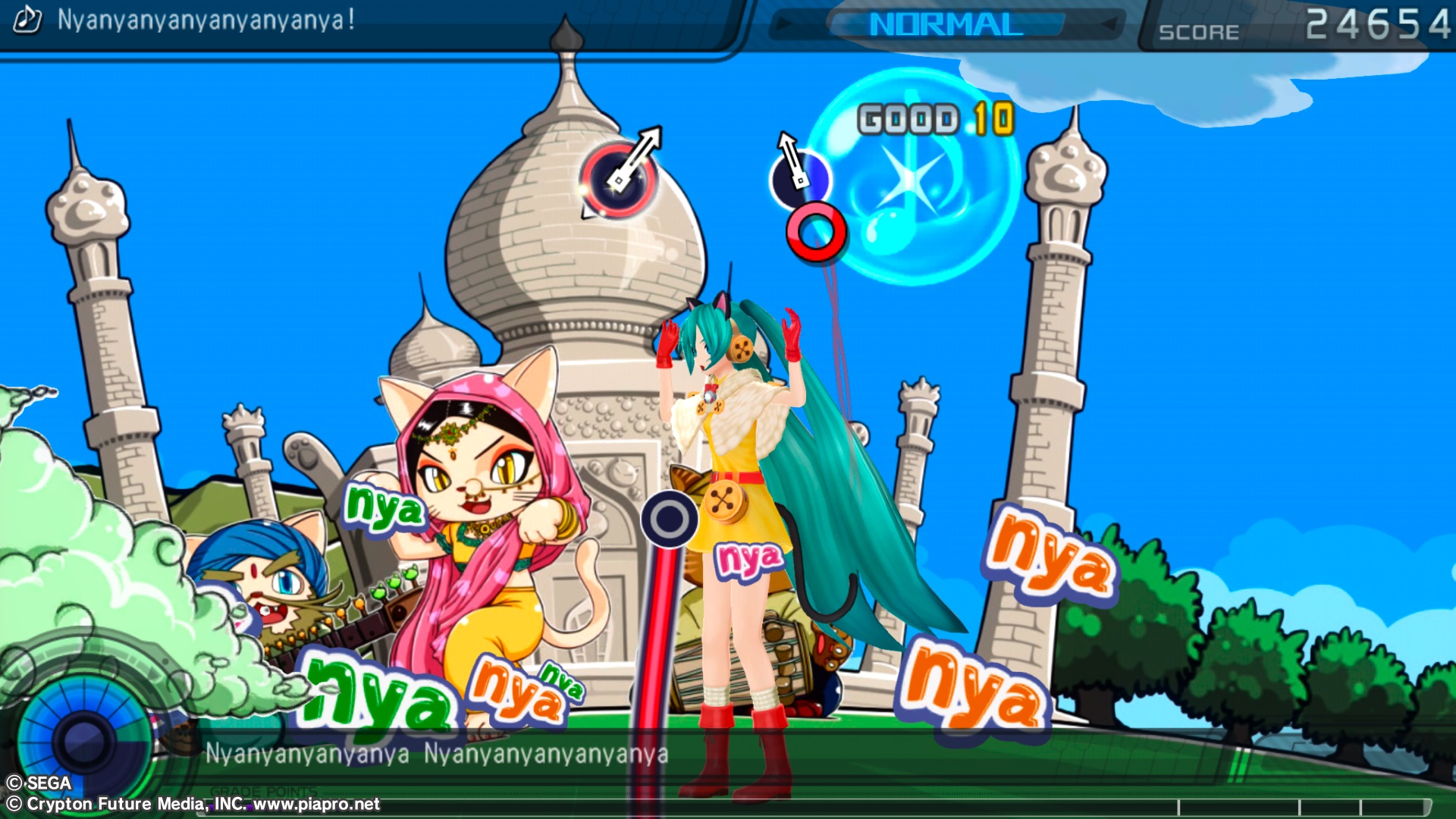
Scenery and characters are very well detailed and the high resolution ensures everything remains razor sharp. The game is a large improvement over its predecessors due to the increase in capability’s of the Ps3/Vita. Character animations are improved with smoother movements for clothing etc (and Miku’s gravity defying hair!) which leads to also better facial animations and the new real-time lighting fleshes out the visual improvements. Framerate is key and I’m happy to report 99.9999999999% of the time its flawless. There was a momentary Judder during Meiko’s Stay with Me when it began to snow, but it only lasted a moment and is the only time I’ve noticed any slowdown. The anime styling of the characters & levels will do nothing to endear you to the game though if you absolutely dislike that styling. There has been the odd occasion when the button icons have been lost in the colourful backgrounds though, notably during Kagamin’s Hachi Hachi Flowery Battle, but it is a rare occurrence when in the zone.
As for sound, well its a rythmn game, so as you’d expect there isn’t much to go on other than to confirm that the sound quality is superb and the songs have been encoded perfectly for this release. Unfortunately the songs haven’t been re-encoded into 5.1. Instead its been encoded as multitrack stereo, thereby preserving its original stereo track while utilising the other channels when needs be. For those that use a 5.1 set-up at least you know beforehand (unless you’ve already purchased) So while there is the odd minor issue with the games presentation, I would say SEGA have done a stellar job of transporting its PsP series to more powerful hardware. The game also has 3D! It only works when playing back videos of songs you’ve cleared and when watching the Live performance segments. There are depth & pop-out sliders to tailor it to your needs, but then again unless your a Vocaloid fan you wont be rushing to try it. I found the 3D to be pretty good, although putting the pop-out slider on max can confuse the hell outta your eyes so that one will need to be lowered for optimal enjoyment.
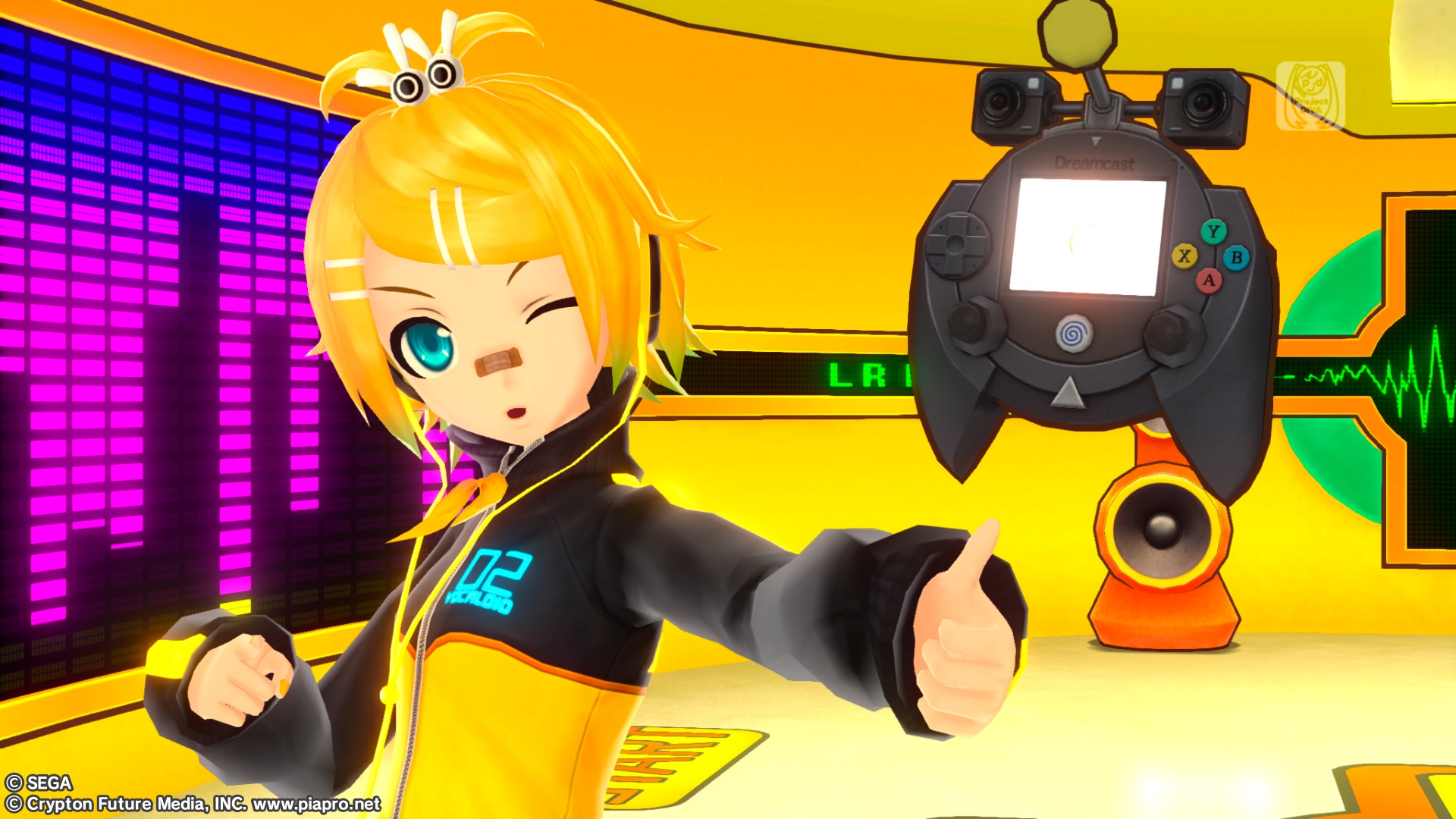
The game retains many of the staples of its gameplay from the previous PsP iterations. Anyone coming from those releases will feel right at home. For everyone else, You’ll be dropping into a superbly refined rhythm game that’s easy to pick up, but devilish once the difficulty is ramped up. Basically, as with all rhythm games, the face buttons are pressed in time with the music to yield points. On Easy only the Circle button is used which is a perfect starting point for anyone new to the game. Up the difficulty and this is where Project Diva really comes into its own. On Normal not only is another face button added, but another symbol is then used in-game, an arrow coloured the same way as the face button. With this you have to press the face button and the corresponding D-pad direction – ie Square+Left for an arrow the same colour as the square button facing left. The jump up to Normal takes a little getting used to, especially if you have just finished Easy, but the Jump to Hard isn’t too bad once you’ve cleared Normal. Its the same but just uses all the buttons (except LI,R1,L2,R2)
With this being a new release there are a few changes to the old formula. The most notable is the ‘Star’ symbol which requires a flick of the analogue. The Technical Zone is another new addition whereby you have to maintain an uninterrupted combo within a time limit for bonus points. I’ve only come across a couple of issues with concerns to gameplay. The first is the new ‘Star’s that requires the use of the analogue. With the analogue having an obvious deadzone, during fast paced sections when symbols are flying everywhere, there can be the odd occasion when you have to be quick with the analogue. The controllers deadzone can, on occasion, cause a quick small jab during a fast section to not register. While by no means is it a game breaker, it is something to ensure you are aware of. The other is Delay. This game can have delay caused by your TV, which will in turn effect your gameplay. Luckily SEGA have included a delay option in the options menu for you to tweak to rid yourself of the TV delay. In all honestly I can’t really find fault with the gameplay, Its been superbly refined from previous PsP releases.
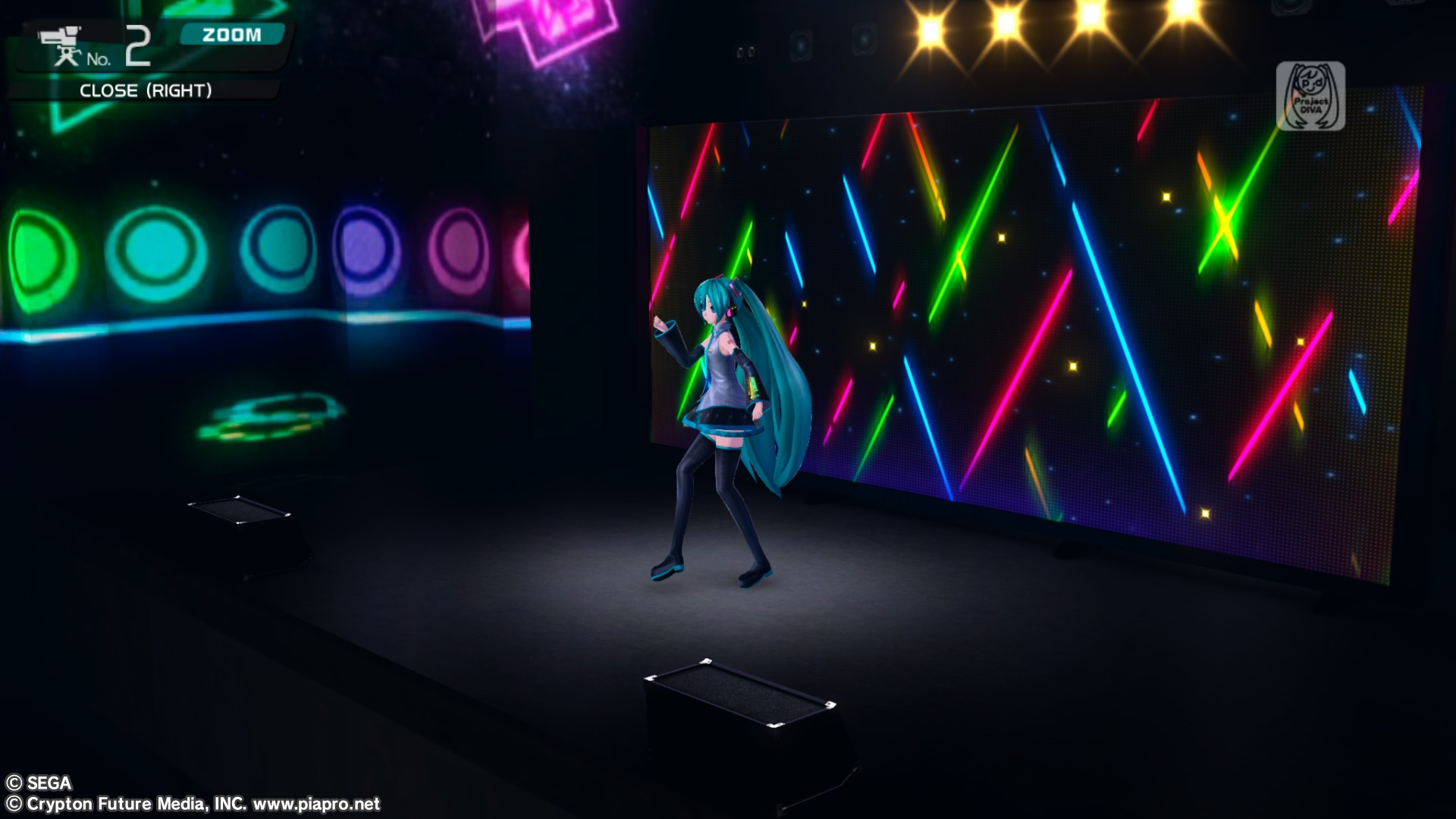
What we have here is a superb rythmn game. There is no denying that fact. While people who have no interest in Vocaloids or rythmn games will probably give this game a miss regardless, any open-minded gamer out there looking to try something new could do a lot worse then to give Project Diva F a chance. There is the odd little niggle here n there, lack of online leaderboards probably the most glaring for a console release, but the gameplay has been refined to almost perfection so that anyone who endears themself to Project Diva F can have hours of enjoyment.. All in all, a superb entry in series! Did I mention it features Hatsune Miku!!??
-
Hatsune Miku: Project Diva F (PlayStation 3) - 9/109/10
Pros
- Fantastic visuals & audio
- Superbly refined gameplay
- Much to do outside of the rhythm gameplay
- Stereoscopic 3D
Cons
- No online leaderboards
- Editing your own PV’s can be fiddly
Geoffrey Wright
Latest posts by Geoffrey Wright (see all)
- Llamasoft: The Jeff Minter Story (PC) - July 26, 2024
- Anger Foot (PC) - July 24, 2024
- Mushoku Tensei: Jobless Reincarnation Quest of Memories (PC) - July 12, 2024




